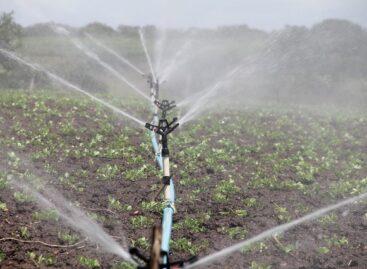Climate change threatens natural carbon dioxide sinks
The latest data show that natural carbon dioxide sinks are not stable at all, and climate change makes them even more vulnerable, so in some cases they can even become carbon dioxide emitters – warn the researchers in the recently published publication of Fluxes – the European greenhouse gas newsletter .

(Photo: Pixabay)
“The changing behavior of natural sinks makes it clear that further reductions in emissions are necessary to achieve carbon neutrality,” the researchers pointed out in a new publication of the Integrated Carbon Observation System (ICOS), which focuses on the European of carbon dioxide sinks, such as oceans and forests, depending on place and time – read the announcement of the ELKH on Wednesday, presenting the volume. The aim of the publication, which is published annually, is to publish the latest scientific results related to germ cell change in a public format. Werner L. Kutsch, Director General of ICOS, wrote in his introductory text: in order to understand what causes carbon dioxide to accumulate in the atmosphere, we must first understand how complex the material flows that cause it are. This is what the first volume of Fluxes reveals to the reader. In the announcement, they pointed out that the climate crisis accompanying the increase in the average temperature on earth is a consequence of the increase in the concentration of atmospheric greenhouse gases. The most important greenhouse gas, carbon dioxide, is affected by three major flows: emissions and uptake by terrestrial ecosystems, emissions and uptake by the oceans, and emissions from the burning of fossil fuels. – Terrestrial ecosystems and oceans – as natural sinks – have so far taken up half of the emissions from fossil fuels. However, it is far from certain that this will remain the case in the near or distant future. – experts warn in the publication.
Ecosystems capture atmospheric carbon dioxide and store it in plants and soil
At the same time, they themselves emit carbon dioxide through plant respiration and soil respiration, or as a result of fires. If the capture is greater than the release, the ecosystem as a whole acts as a sink. This delicate balance is easily disturbed by human activity, such as cutting down forests, clearing green areas, and agricultural processes that deplete the soil’s carbon content. However, this balance is also extremely sensitive to climate changes. ICOS data show how ecological systems respond to changes in climate and land use. As they point out, the weakening of terrestrial carbon dioxide sinks or even becoming emitters can pose a serious obstacle to social efforts to achieve carbon neutrality. The oceans are huge sinks of carbon dioxide, mitigating global warming by sequestering a quarter of the amount from fossil fuels. However, experts do not know how long this absorption capacity will remain if the climate warms. According to the announcement, the amount of carbon dioxide stored in the dissolved state in the oceans will change due to rising temperatures and a changing climate. In order to understand the carbon cycle in the oceans and make future predictions, it will therefore be necessary to build a serious monitoring system. They draw attention to the fact that natural land and ocean carbon sinks are becoming increasingly vulnerable due to climate change. To solve this problem, we need to dramatically reduce emissions from fossil fuels.
The increase in atmospheric carbon dioxide concentration is not linear, the measured values show seasonal changes and deviations depending on the measurement site
The carbon dioxide curve peaks each spring and declines each summer. The decrease is due to the high carbon dioxide sequestration capacity of the European terrestrial ecosystem, i.e. the nature that lives in the spring and is green in the summer. In addition, the typical weather in a given location also results in significant differences between the curves of each year. Emissions from fossil fuel use also vary with time and place, and there is continuous mixing in the atmosphere. Because of the aforementioned, the researchers urge the creation of a wide-scale greenhouse gas monitoring system covering the entire Earth as soon as possible, for which the infrastructure operated by the European ICOS can serve as a good example. – In the current global climate crisis, the growth rate of atmospheric carbon dioxide will be the measure of success. Swift action is needed to keep temperature increases below 1.5 degrees Celsius, as required by the Paris Agreement. Decision-makers must take bold and effective steps to encourage self-restraint in society and thus reduce the amount of greenhouse gases resulting from human activity. The global greenhouse gas monitoring system helps climate protection measures by providing a scientific basis for decisions. – experts pointed out.
From January 1, 2022, Hungary became a full member of the European ICOS consortium. The ELKH Atomic Nuclear Research Institute (ATOMKI) operates the currently only measuring station in Hungary belonging to the ICOS measuring network at the Hegyhátsál TV tower, and ATOMKI is also responsible for coordinating the Hungarian consortium called ICOS Hungary.
MTI
Related news
Climate-tolerant alternative in arable fields: peanuts could be one of the winners of climate change
🎧 Hallgasd a cikket: Lejátszás Szünet Folytatás Leállítás Nyelv: Auto…
Read more >Ministry of Agriculture: the government is giving priority support to the development of irrigation
🎧 Hallgasd a cikket: Lejátszás Szünet Folytatás Leállítás Nyelv: Auto…
Read more >AM: ornamental plant growers can continue to count on government support
🎧 Hallgasd a cikket: Lejátszás Szünet Folytatás Leállítás Nyelv: Auto…
Read more >Related news
2026 begins in agriculture amid crises and a wave of investment – banking focuses on the dairy and pig markets, as well as CAP investments
🎧 Hallgasd a cikket: Lejátszás Szünet Folytatás Leállítás Nyelv: Auto…
Read more >Sovereignty Protection Office: According to the public, there is no place for foreign majority ownership in strategic sectors
🎧 Hallgasd a cikket: Lejátszás Szünet Folytatás Leállítás Nyelv: Auto…
Read more >Poor fruit harvest weighs on the pálinka sector
🎧 Hallgasd a cikket: Lejátszás Szünet Folytatás Leállítás Nyelv: Auto…
Read more >







